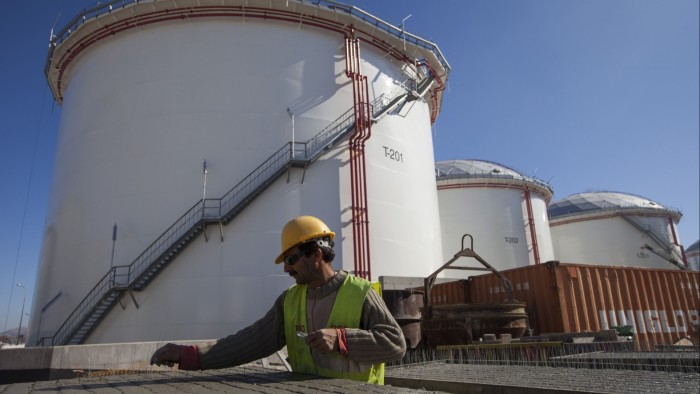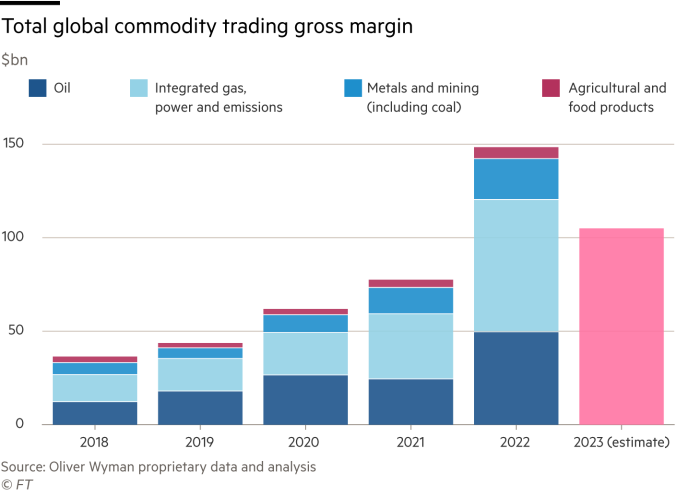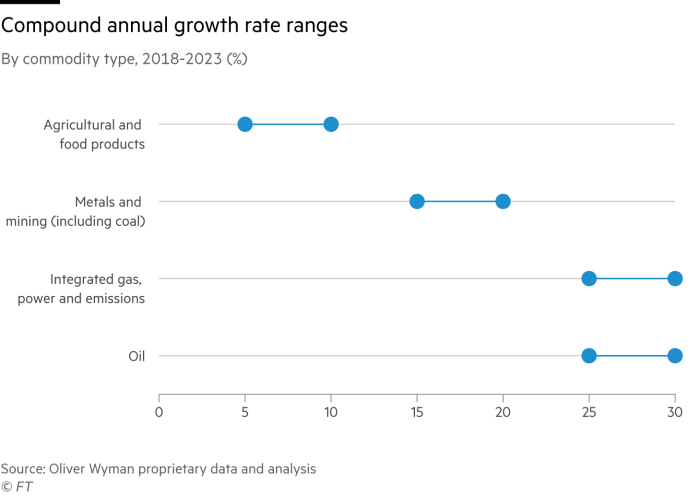Commodity traders sitting on up to $120bn in cash after years of record profits

Simply sign up to the Commodities myFT Digest -- delivered directly to your inbox.
The commodity trading industry has accumulated as much as $120bn in cash reserves after five years of record growth, building a war chest that the biggest traders are set to reinvest to strengthen their dominance.
The industry reserves, estimated at between $70bn and $120bn in a study by consultants Oliver Wyman, are the result of a huge rise in profits across almost all parts of the industry.
Gross profits from commodities trading activities — including by banks, hedge funds, independent traders and asset-backed businesses such as BP and Shell — rose from about $36bn in 2018 to a record $148bn in 2022 largely because of fallout from the war in Ukraine, the study found. In 2023 Oliver Wyman estimates gross profits or margin — the amount made on trades before deducting costs such as tax, salaries and bonuses — hit $105bn, down about 30 per cent year on year, but still about double historic levels.

Independent traders — a group including privately held Vitol, Trafigura, Gunvor and Mercuria — have been particularly successful, with “five years, back to back, of the best year ever”, said Adam Perkins, a partner at the consultancy and one of the report’s authors. “As a consequence of that, people are just sitting on absolutely enormous piles of retained earnings and the question that people are asking themselves is what can we do with that?”
Vitol, the world’s biggest independent energy trader, made record net profits of $15.1bn in 2022, paid an average of $785,000 in salaries and bonuses to its 3,311 employees and almost doubled its shareholder equity to $25.8bn, according to accounts filed in the Netherlands. The company, whose top executives are largely based in London, is expected to share its 2023 accounts with its bankers this month.
Rival Trafigura, reported record net profits of $7.4bn in its most recent financial year, which ended in September, and tripled its dividend to the company’s 1,200 employee-shareholders to $5.9bn.

One consequence has been a gradual “changing of the guard” with some of the trading houses using record profits to buy out wealthy executives and bring in others, Perkins said.
In September Trafigura restructured its senior team in the largest reshuffle at the top of the business since its founder Claude Dauphin died in 2015. At Geneva-based rival Mercuria, global head of trading Magid Shenouda is retiring from the company as it prepares for the arrival of Macquarie’s former head of commodities, Nick O’Kane, who was one of the highest paid bankers in the world last year.
The record profits have also increased the cash available to acquire processing and distribution businesses.
Vitol last month launched a €1.7bn bid to acquire Italy’s Saras, which owns the biggest single refinery in the Mediterranean on the island of Sardinia. In December, Swiss-headquartered Gunvor, majority owned by Swedish billionaire Torbjörn Törnqvist, agreed to buy a gas-fired energy plant in Spain from BP.
Gas and power trading has overtaken oil as the biggest source of profits in the sector, contributing almost half of the industry’s gross earnings in 2022, according to Oliver Wyman.
The rapid growth in earnings in the past five years has meant scale is increasingly important. The most successful traders are either the biggest, or dominant in a particular area, Perkins said, citing the success of Scandinavian renewable energy specialists, such as Statkraft of Norway and Sweden’s Vattenfall.
“It’s a game a of scale but relative scale also works,” he said. “What we see is either behemoths or niche players.”
Comments